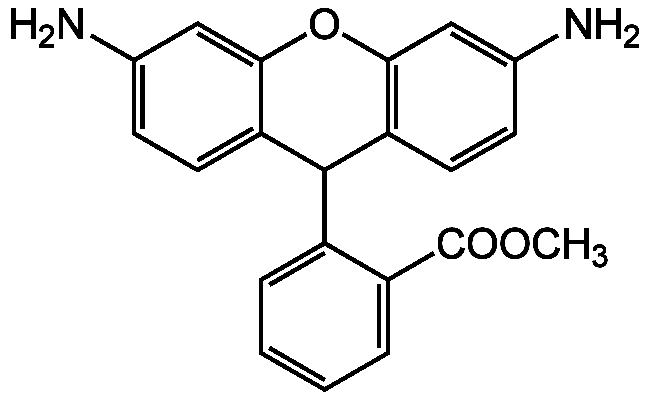
Chemical Structure
Dihydrorhodamine 123 [109244-58-8]

CDX-D0134
CAS Number109244-58-8
Product group Chemicals
Estimated Purity>95%
Molecular Weight346.38
Overview
- SupplierChemodex
- Product NameDihydrorhodamine 123 [109244-58-8]
- Delivery Days Customer10
- CAS Number109244-58-8
- CertificationResearch Use Only
- Estimated Purity>95%
- Hazard InformationNon-hazardous
- Molecular FormulaC21H18N2O3
- Molecular Weight346.38
- Scientific DescriptionCell-permeable non-fluorescent reactive oxygen species (ROS) indicator. Passively diffuses across membranes where it is oxidized by peroxynitrite to rhodamine 123 which localizes in the mitochondria and exhibits green fluorescence (Ex/Em wavelengths of 500 and 536 nm). Used to investigate reactive oxygen intermediates produced by human and murine phagocytes, activated rat mast cells and cultured endothelial cells. In addition, it has been used together with Fura Red calcium indicator to simultaneously measure oxidative bursts and Ca2+ fluxes in monocytes and granulocytes. Dihydrorhodamine 123 has been shown to be a more sensitive probe than H2DCFDA for detecting granulocyte respiratory bursts. - Chemical. CAS: 109244-58-8. Formula: C21H18N2O3. MW: 346.38. Synthetic. Cell-permeable non-fluorescent reactive oxygen species (ROS) indicator. Passively diffuses across membranes where it is oxidized by peroxynitrite to rhodamine 123 which localizes in the mitochondria and exhibits green fluorescence (Ex/Em wavelengths of 500 and 536 nm). Used to investigate reactive oxygen intermediates produced by human and murine phagocytes, activated rat mast cells and cultured endothelial cells. In addition, it has been used together with Fura Red calcium indicator to simultaneously measure oxidative bursts and Ca2+ fluxes in monocytes and granulocytes. Dihydrorhodamine 123 has been shown to be a more sensitive probe than H2DCFDA for detecting granulocyte respiratory bursts.
- SMILESCOC(=O)C1=CC=CC=C1C1C2=CC=C(N)C=C2OC2=C1C=CC(N)=C2
- Storage Instruction2°C to 8°C,-20°C
- UNSPSC12352200
